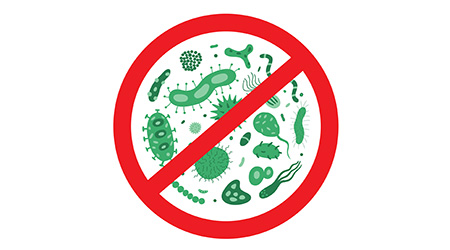
Contributed by Kaivac.
The importance of professional cleaning has never been more clear than it is today. Creating and maintaining proper cleaning protocols will keep schools, offices and other facilities hygienically clean and will stop the spread of disease.
But as effective as proper cleaning is at combating the spread of bacteria, improper protocols or poorly trained staff can actually add to the spread of disease. Consider the following historical case:
Approximately 100 children were attending a preschool. One child after another came down with hand, foot and mouth disease, a common childhood virus. While the pathogens that cause the virus can spread by sneezing and coughing, here it appears to have been spreading by the children touching contaminated surfaces.
School administrators determined that an investigation was necessary into how the school was being cleaned. Here is what was uncovered:
• String mops and the buckets used to mop the floors were not cleaned or sanitized.
• The cleaning crew used the same mop heads to mop floors in all areas of the school.
• The crew was not following “best practices” when it came to cleaning surfaces. Further, “store-bought” cleaning solutions were being used instead of professional cleaning solutions.
• The cleaning crew was not changing their gloves and towels frequently enough.
Analyzing this case study, Matt Morrison, communications manager for Kaivac, explains how cleaning could have spread this virus. According to Morrison:
• Because these are preschoolers, they were likely sitting and touching the floor throughout the day. “If the floors are soiled by contaminated mops, this is very likely how [the virus] is spreading.”
• The use of mops should be avoided; automated floor cleaning alternatives such as auto-scrubbers or far less costly “auto vacs” should be considered. These machines eliminate the use of mops.
• To clean surfaces, a microfiber color-coded cleaning system is necessary. Alternatively, what are called “flat-surface cleaning systems” should be employed to clean and disinfect counter surfaces.
“Finally, it looks like this cleaning crew needed proper training,” says Morrison. “As green cleaning expert Steve Ashkin has said, cleaning does not happen by magic. Cleaning workers must be taught cleaning best practices.”
The lessons from this study are key to stopping the spread of viruses. While many viruses are primarily passed from person to person through the air, we also know viruses can live on surfaces for hours, even days. This makes the proper cleaning of surfaces crucial in halting the spread of various diseases.

 The Down and Dirty on Cleaning in Virus Season
The Down and Dirty on Cleaning in Virus Season How Surfactant Use is Expanding in Commercial Cleaning
How Surfactant Use is Expanding in Commercial Cleaning